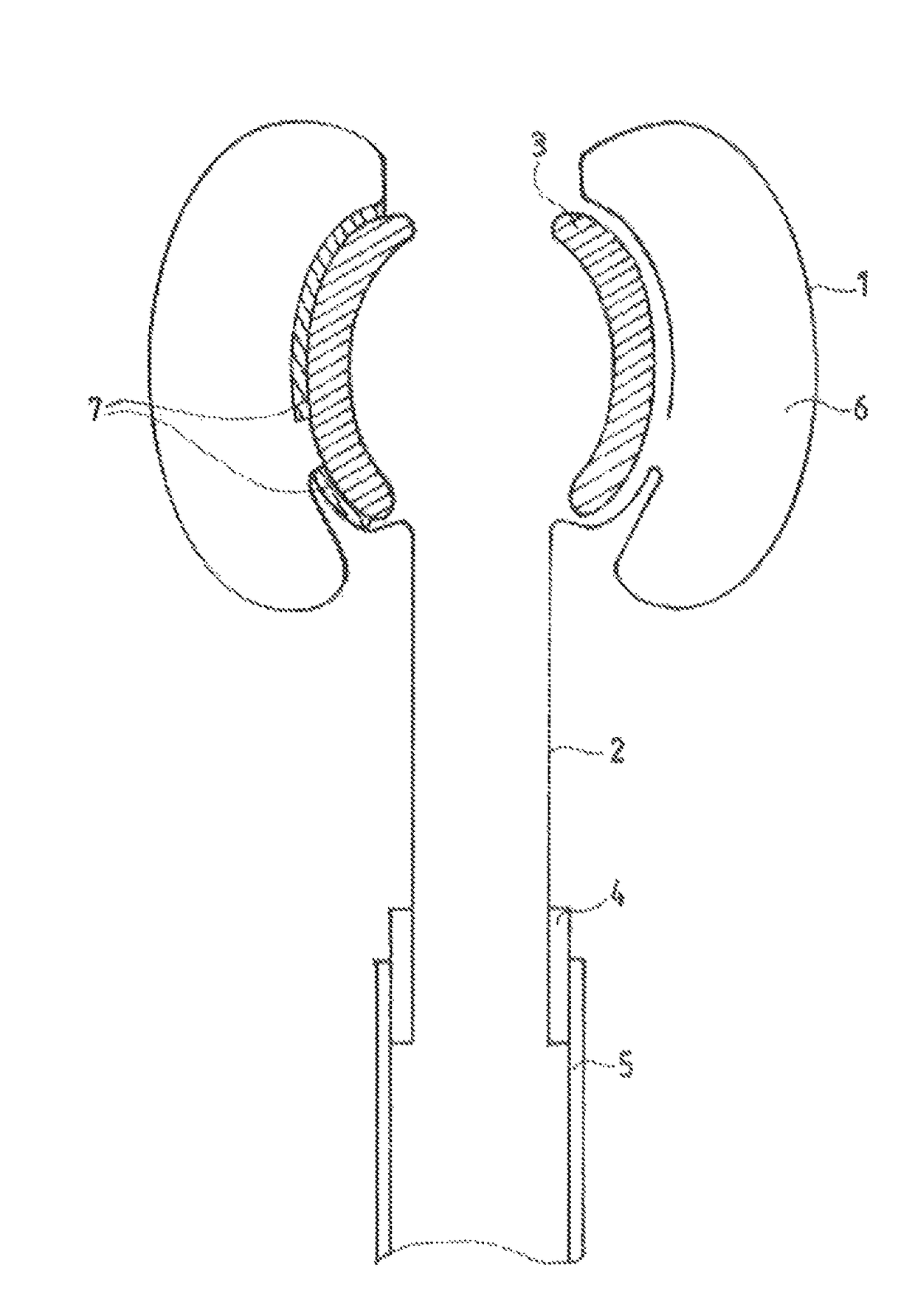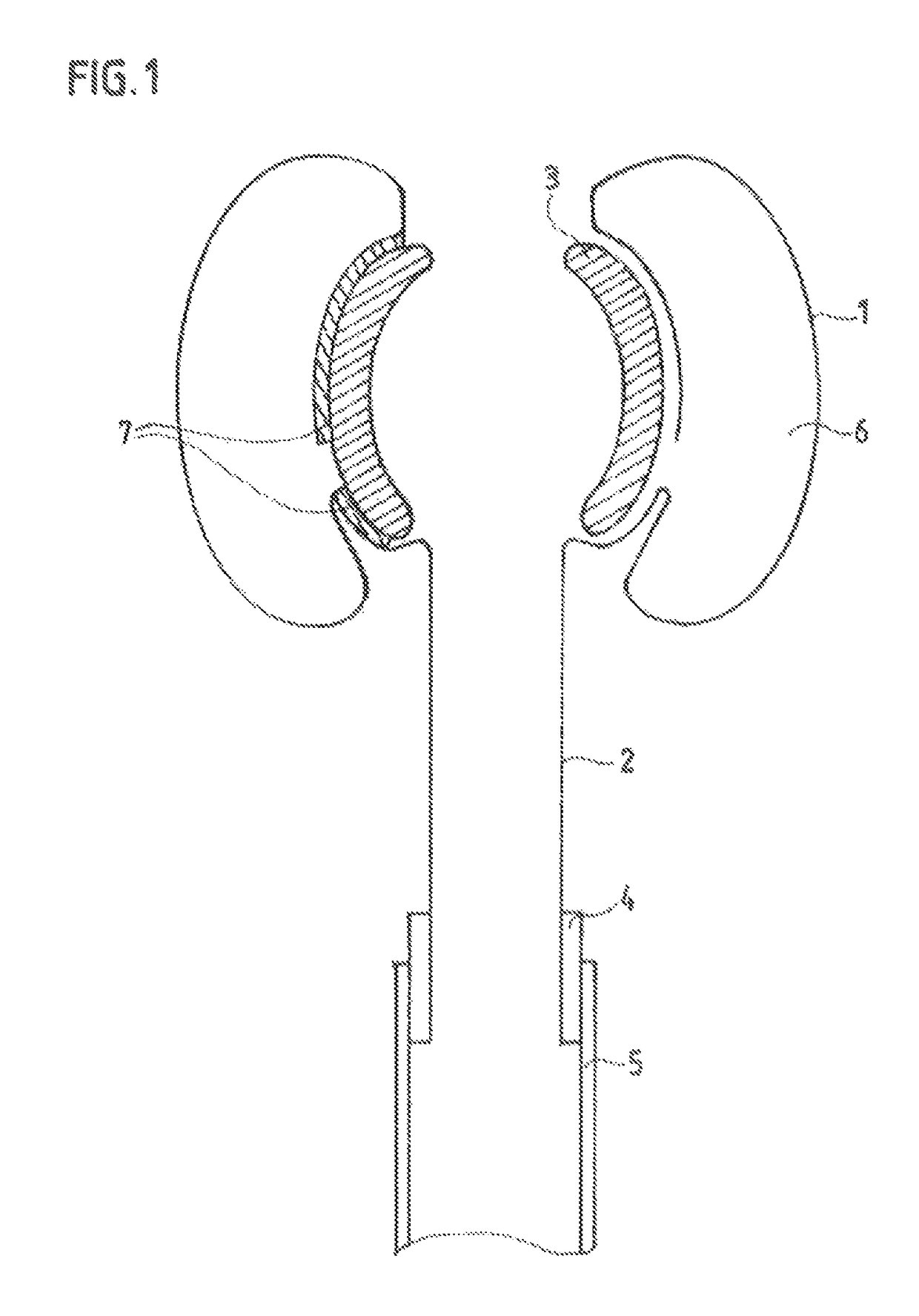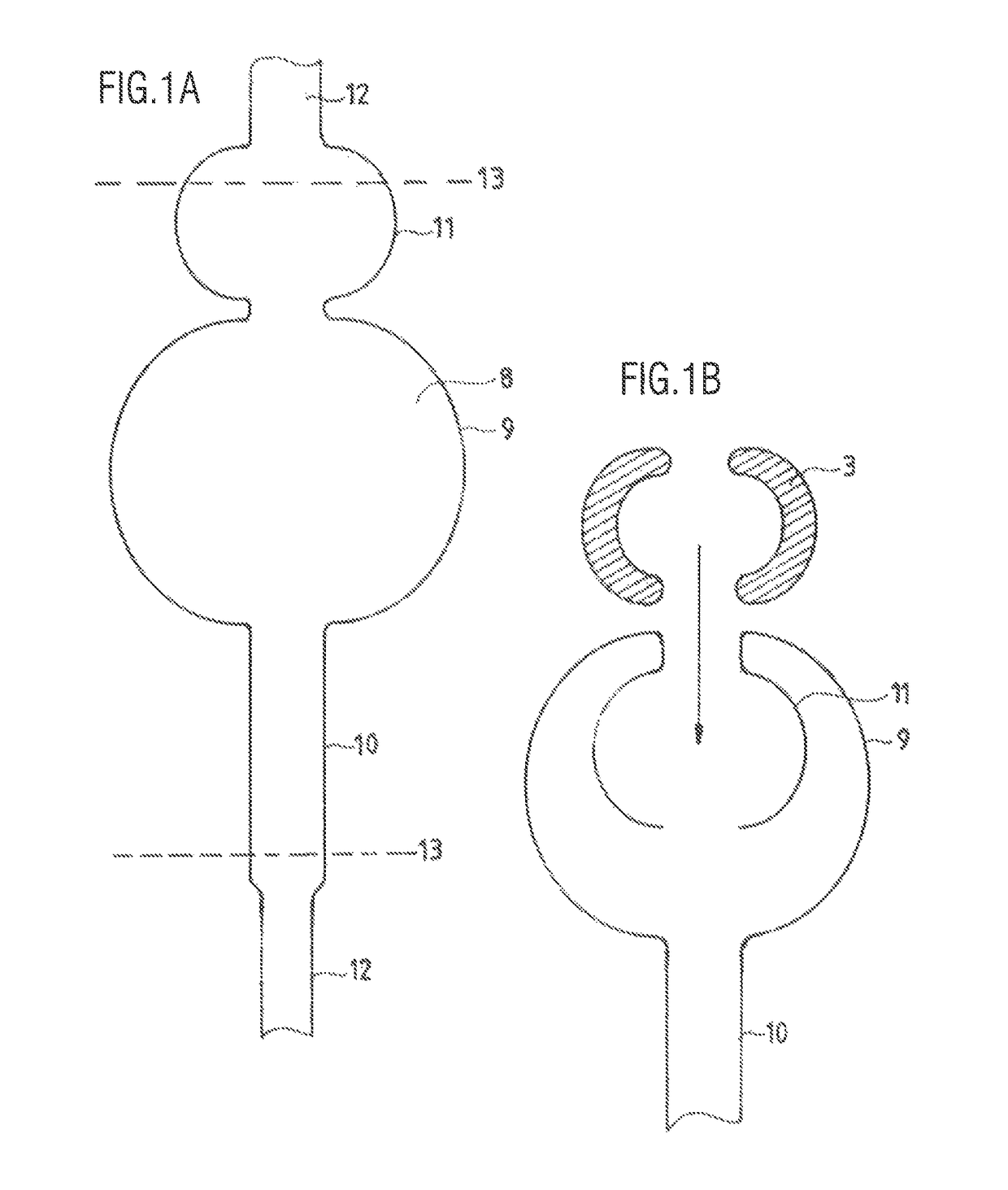Device for stool drainage
a technology for scleroderma and stool, which is applied in the field of scleroderma devices, can solve the problems of high risk of pressure-induced injury in the region of the terminal rectum, difficult to achieve the effect of sealing efficiency and lowest possible filling pressur
- Summary
- Abstract
- Description
- Claims
- Application Information
AI Technical Summary
Benefits of technology
Problems solved by technology
Method used
Image
Examples
Embodiment Construction
[0121]Intrarectal anchor balloon 1 and transanal intermediate segment 2 are made from a single, common tube blank 8, the transanal segment 2 of the preshaped balloon film 8 having only a single-layered wall. Intrarectal and transanal segments 1, 2 of the balloon film 8 form a structural unit in the illustrated variant of the device, but present no functional separation in the state of being assembled and fixed on / against a funnel. As FIG. 1 shows, the tube blank 8 is tucked back into itself in the region of the intrarectal anchor balloon 1, particularly inwardly or in such a way that any gap remaining between the end edge of the everted tube 8 and a middle tube section of the tube 8 facing said end edge is inside the intrarectal anchor balloon 1; as a result of the eversion, the intrarectal anchor balloon 1 has essentially a toroidal structure.
[0122]The two segments 1, 2 of the film 8 are segregatingly or sealingly separated from each other by an approximately rotationally symmetric...
PUM
 Login to View More
Login to View More Abstract
Description
Claims
Application Information
 Login to View More
Login to View More - R&D
- Intellectual Property
- Life Sciences
- Materials
- Tech Scout
- Unparalleled Data Quality
- Higher Quality Content
- 60% Fewer Hallucinations
Browse by: Latest US Patents, China's latest patents, Technical Efficacy Thesaurus, Application Domain, Technology Topic, Popular Technical Reports.
© 2025 PatSnap. All rights reserved.Legal|Privacy policy|Modern Slavery Act Transparency Statement|Sitemap|About US| Contact US: help@patsnap.com



